This is part 2 of this blog series. If you haven’t read part 1, please do read it first as this both references and builds on it.
Continuing to establish historical context
Establishing a rich and in-depth context is not something which can be accomplished from one exposure at the start of the unit. It requires repeated meaningful exposures to ensure children continuously develop a sense of period.[i] As such, the worldbuilding for this unit continued in every lesson of the unit. It was the first time I have planned and taught history to this year 5/6 class therefore it was something they hadn’t encountered in as explicit detail before. In addition, the nature of this unit means that the impact effects the world of the 19th century on many fronts (more on that later).
Invention and expansion
The invention and development of railway locomotives is a proverbial rabbit hole to get lost down. The key story in lesson 2 was to provide an overview of some key inventors and victories in the early 19th century. Specifically, Richard Trevithick’s unsuccessful locomotive, then George Stephenson’s victory at the Rainhill Trials. Maintaining a clear balance between complexity and manageable cognitive load was a fine line.[ii] This simple video from Cambridge University was the perfect way to convey the expansion as a short and effective source. With liberal application of a snipping tool, it allowed the children to focus on extracting ideas and then, under guidance thinking about so what… (e.g. impact).
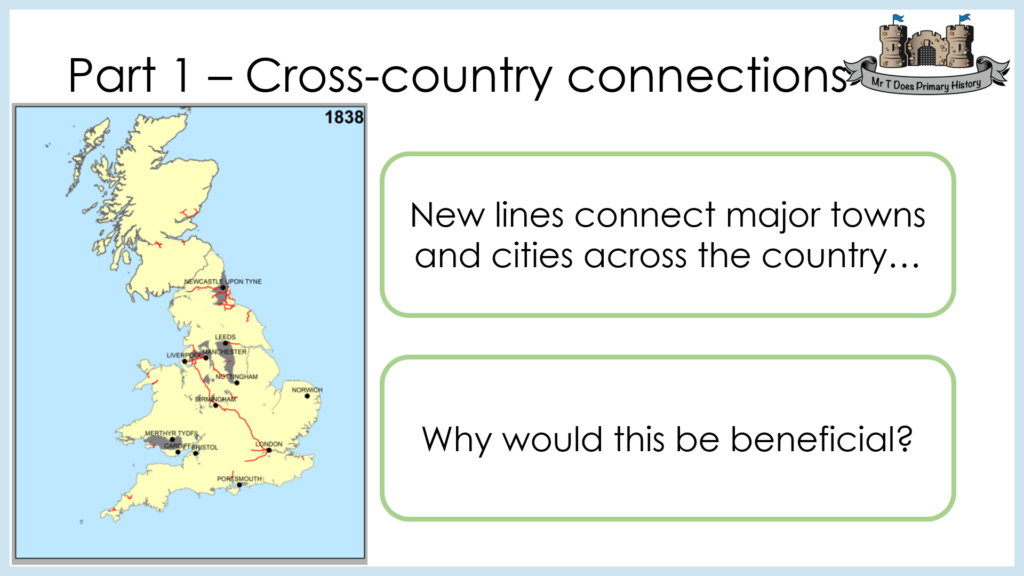
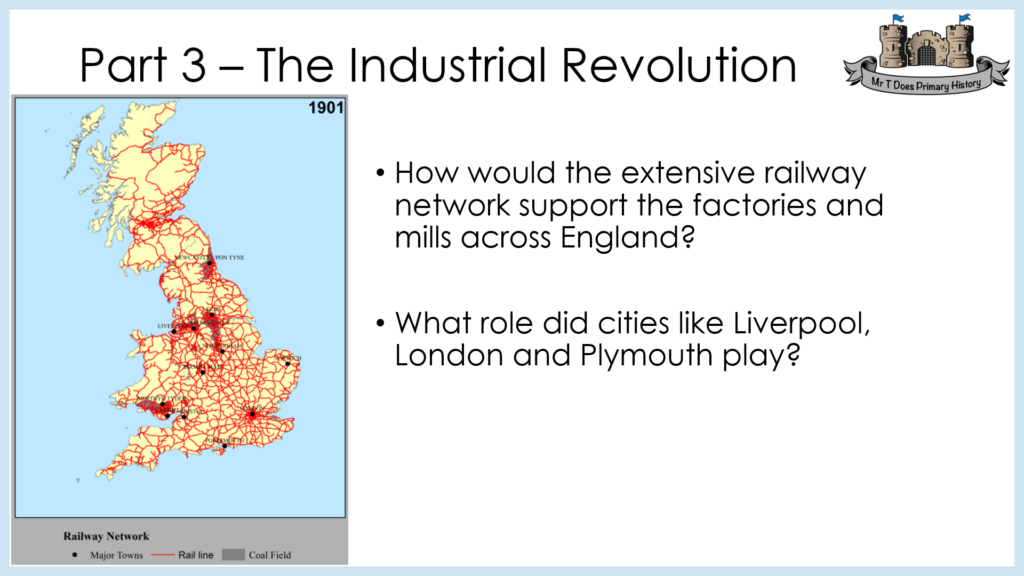
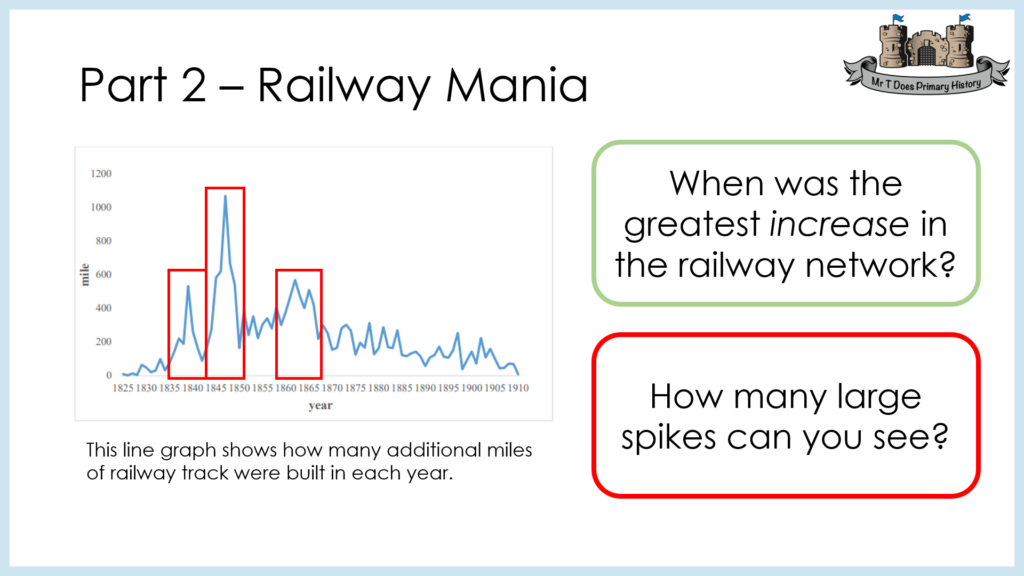
Alongside this clear focus from extracting evidence and moving to interpreting the findings, the lesson ensured children were introduced to how we ‘know’ about the history in question. Given the range of 19th century documents that survived, and the breadth of statistical evidence, this was easier than in other units that are from the early medieval or ancient worlds. In this case, the fact that railway expansion was part of wider industrialisation and the Rainhill Trial was a competition to find suitable technology instead of something that merely happened. The children studied it to identify both the strict rules and why the specification would be key for the technology.
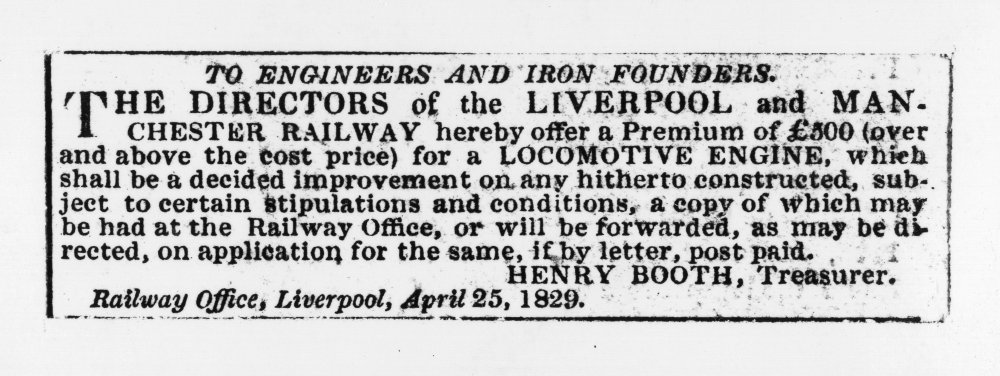
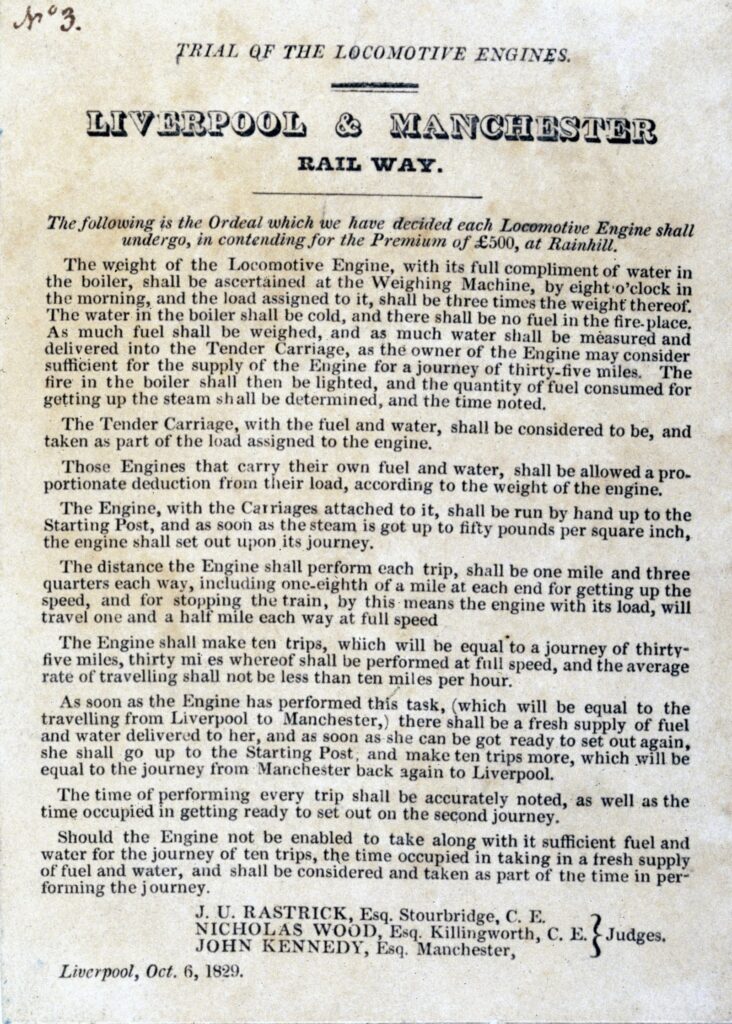
This small exposure to some of the other developments that occurred in the 18th and 19th centuries made it easier to explain that many changes occurred concurrently, and we were choosing to focus on some. It is key to remember that rarely does a single change happen in isolation. when studying the source material, the children found some of the language difficult to understand which is why it was delivered in the manner they are used to for whole class reading. The mode of delivery enabled success in history; it was NOT merely stealth English. Disciplinary knowledge is a key area for development highlighted in the recent Ofsted subject report which highlighted: “The scope of this disciplinary knowledge may be more limited for younger pupils. However, it must avoid misconceptions and unhelpful oversimplifications about the processes of historical enquiry.”[iii] The emphasis here, therefore, was to ensure children were beginning to develop their understanding of how historians study the past and the breadth of source material they consult.
As the unit progressed, it was key to link the new knowledge into the period in which it took place. The children needed explicit scaffolding and guided navigation to ensure they only went where the evidence took them… quite frequently, they were taking giant leaps beyond!
A Contextual Framework
I am a huge fan of Inspire Education’s platform (full disclosure – I receive free access and if schools sign up from my recommendation, I receive a referral fee.) and wanted to use it in this unit to provide an engaging introduction to the sights and sounds that formed the backdrop of people’s lives in the new towns and cities like Leeds. When we moved the emphasis onto the role of the railways, it was the logical start point. To ensure the children understood the scenes were fictional but based on the historical reality, they were carefully explored and built upon with future tasks.
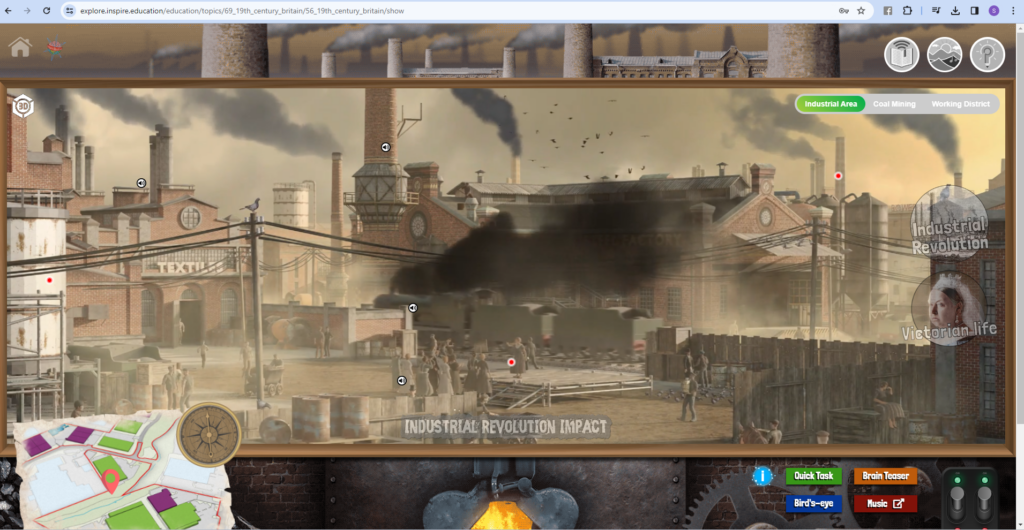
For the first few minutes, I just let children enjoy making broad observations about what they could see, hear etc. Then, added a simple focus by asking them to explain to their partner what role the railways played to support the steel factory and textile mill. The discussion enabled them to focus attention on the previous lesson using the expansion of the railways to create an interconnected network for trade. The scene was one we came back to at the start of lesson 3, 4 and 5 to reaffirm the connections to this ‘world’.
Connecting local to national
Aim 6 of the National Curriculum focuses on connecting knowledge. It states, “gain historical perspective by placing their growing knowledge into different contexts, understanding the connections between local, regional, national and international history; between cultural, economic, military, political, religious and social history; and between short- and long-term timescales.”[iv] This unit was the perfect example to study industrialisation across the country.
First, what did it look like in Leeds? The children have studied Leeds’ history in other units and most will have visited the centre on a number of occasions. As such, they have a foundational understanding of the layout of the city and some of the buildings will be similar to what is introduced in the lessons. This was supported by the use of a range of maps which are freely available from the National Library of Scotland website[v] and artworks found online. The emphasis was on what industry took place around the city centre and how could this benefit or be benefited by the railways. The emphasis was economic history with careful narration of just who in society would likely benefit from the flourishing mills, etc.
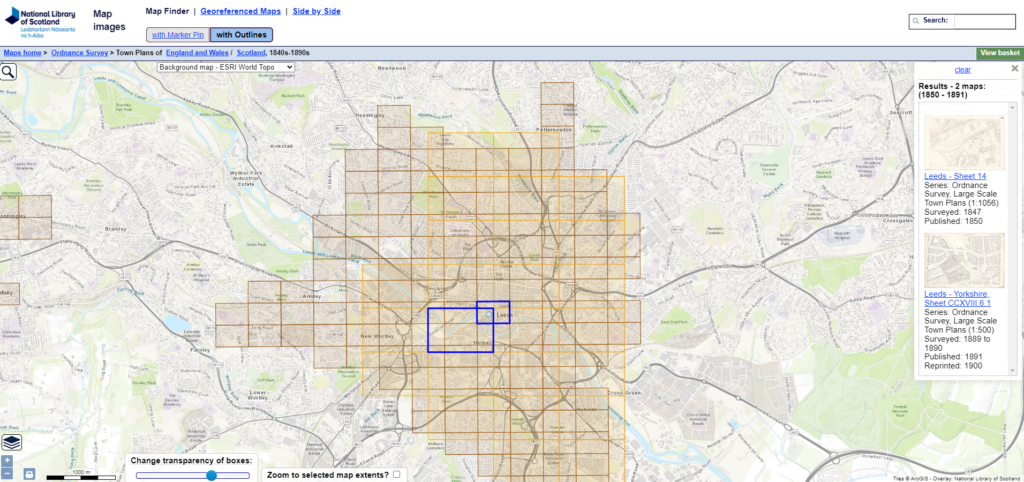
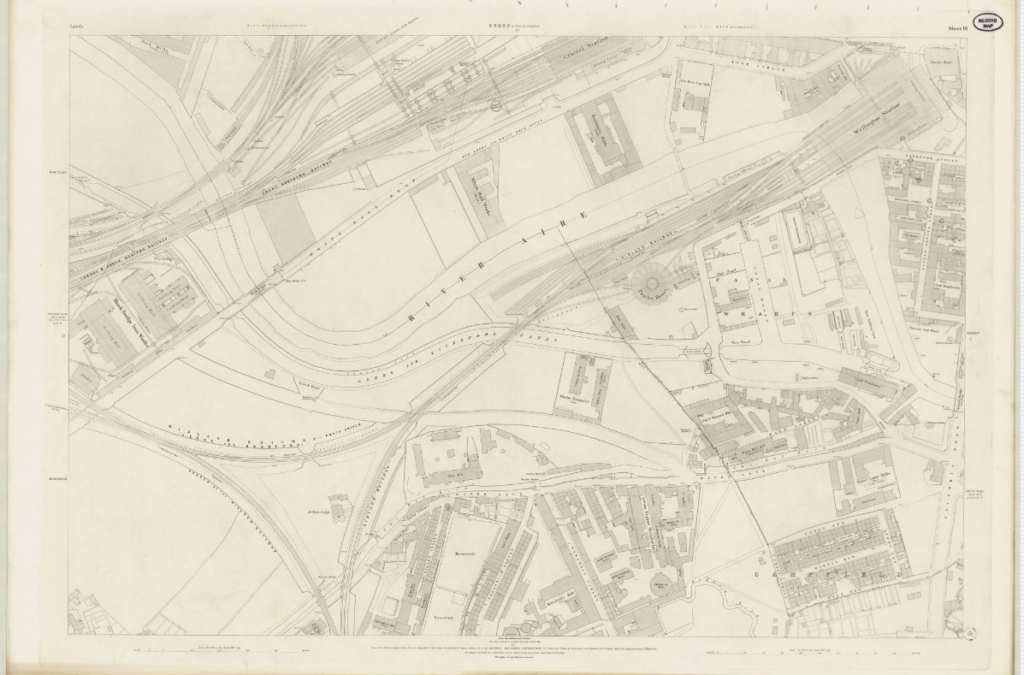
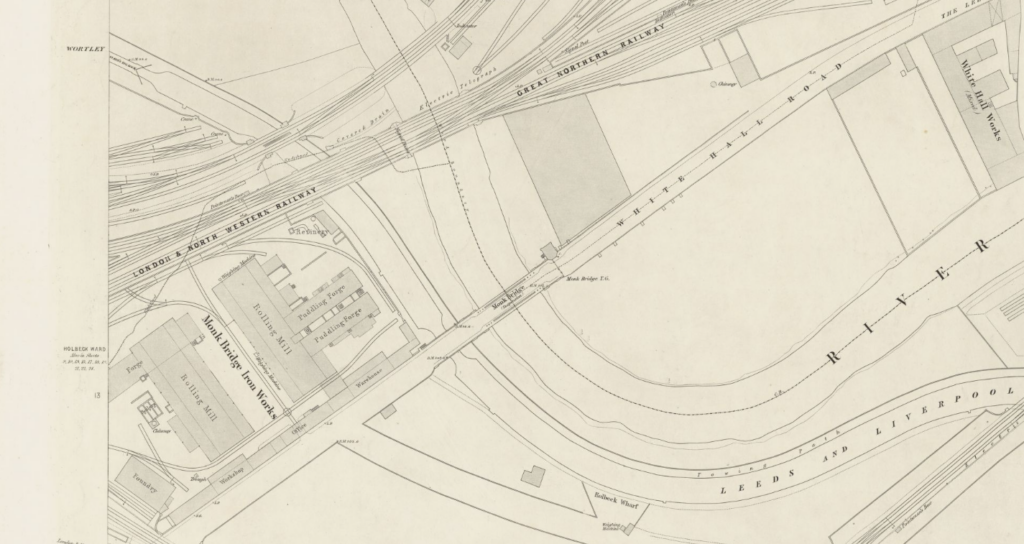
When studying source material, it is important to prompt children to consider which part of the narrative this helps us to understand and which it does not. The lived experiences of different social classes were not part of this lesson… that was to follow! It had to follow as, even with the careful narration as the owners being the beneficiaries, the children held onto the misconception that everyone got rich together in some kind of egalitarian way.
Lesson 5 built on this by asking, how did this compare to elsewhere?
Using a local example to teach a bigger picture is an approach that is valuable across the history curriculum where it offers value!
Part 3 focuses on why and how I changed the planning because of the misconception mentioned above, the branches of history the children were discussion and final thoughts…
[i] Ian Dawson, Historical Association’s Teaching History 135, P. 50
[ii] https://my.chartered.college/impact_article/cognitive-load-theory-and-its-application-in-the-classroom/
[iii] https://www.gov.uk/government/publications/subject-report-series-history/rich-encounters-with-the-past-history-subject-report#primary
[iv] https://assets.publishing.service.gov.uk/government/uploads/system/uploads/attachment_data/file/239035/PRIMARY_national_curriculum_-_History.pdf
[v] Immense thanks to Chris Trevor who introduced me to this brilliant resource several years ago. The full collection can be accessed here: https://maps.nls.uk/index.html
